Powet Alphabet: H is for Hasbro
by Crazy, filed in Powet Alphabet, Toys on Feb.19, 2011
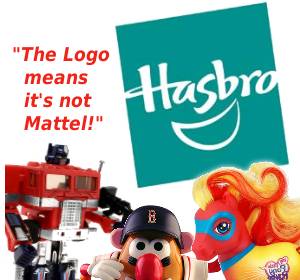
In the United States, there are two major toy companies that have been battling back and forth for the number one spot for decades. The current leader is Mattel, but the number two, Hasbro, is bridging that gap by leaps and bounds in recent years. As an avid toy collector, I know quite a bit about toy history, but not so much about toy company history. Thats why today’s article H is for Hasbro.
Banner image from Consumerist.
Hassenfeld Brothers Inc., a company started by Henry and Helal Hassenfeld in 1923, was originally a textile business dealing primarily with cloth leftovers. The company would make hat lining and covers for pencil cases. While Helal would go on to spin out a subsidiary of the company that dealt primarily with the textile side of the business, Henry took over the school supply side and eventually Hassenfeld Brothers Inc. itself. Eventually the would go on to make the entirety of their pencil cases and expand to other school supplies. In 1930, when Hassenfeld Brothers’ pencil supplier decided to raise the prices of their pencils and begin manufacturing their own pencil boxes, Henry declared that his company would enter the pencil making business, succeeding in 1935 with the help of his sons Merrill and Harold. Empire Pencil, the Hassenfeld subsidiary, became the largest pencil manufacturer in the country and would go on to become a very steady form of revenue for the company for next half century.

In 1943, Helal Hassenfeld passed away. In his wake, Henry became CEO and Henry’s son, Merrill became president of Hassenfeld Brothers Inc.. As demand for school supplies started to wane in the 1940’s, the pencil boxes would be repurposed as packaging for roleplay items such as a nurse’s kit. There was even an air-raid warden’s set that included flashlights and toy gas masks. In 1952, a man by the name of George Lerner approached the company with his invention of a set of many different toy accessories that could be fitted on to any fruit or vegetable to appear like a person. The company purchased Lerner’s “funny face man” and marketed it as Mr. Potato Head. It would become the first toy to be advertised on television and became a huge hit. The line would later be exanded quite a bit with a Mrs. Potato Head the next year and many more sets after that to make Potato pets and more. Mr. Potato Head is the very same mascot standing outside Hasbro headquarters in Rhode Island today.
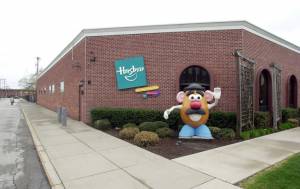
Hassenfeld Brothers became a major licensee of Disney characters in 1954 further boosting their product portfolio.
The 1960’s and 1970’s would be a time of many highs and lows for the company starting with the death of Henry Hassenfeld in 1960. Merrill would become President and CEO of Hassenfeld Brothers, while older brother Harold continued running Empire Pencil. After a sales rep suggested to try a toy line based on a military television show of the time called ‘The Lieutenant’, the company decided to follow up on the idea of a military line of dolls, but to do so with its own concept for the line and not rely on the success of a television show. 1964, Hassenfeld Brothers introduced the GI Joe figure. Purposely trying to differentiate it from dolls currently available, they marketed it as a twelve inch tall “action figure” with articulation and with it an entire genre of boys’ toys was born.
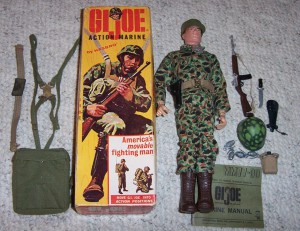
Hassenfeld Brothers officially shortened their company name to Hasbro in 1968. The company’s products had already been labeled as such for several years by that time. It was also at this time the company became a publicly traded entity, though most of the stock stayed in the hands of the Hassenfeld family.
Based on growing disapproval of war and war toys due largerly to backlash to the Vietnam War, Hasbro rebranded their GI Joe line as the GI Joe Adventure Team, a far less militaristic line that focused more on action than conflict.
1969, also brought the purchase of the Claster Enterprises company responsible for the popular show Romper Room. This purchase would lead to a toy line, in addition to several attempts to widen Hasbro’s endeavors including Romper Room themed day cares which failed miserably. To quote Alan Hassenfeld, son of Merrill, “We’d get phone calls saying, ‘We can’t find one of the kids.’ The whole company would stop.”
1974 saw Merrill Hassenfeld stepping aside from the role of president while, maintaining his position as CEO. His son Stephen was named president of the company. The GI Joe line was discontinued in 1975 due to the rising cost of oil and a declining popularity. The financial outlook of the company was looking bleak. In 1979, Hasbro was forced to stop paying dividends to stockholders. Harold Hassenfeld, still running the Empire Pencil subsidiary, was angered by the floundering toy division. While most of the capital investment for many years went to the toy division, his very steady revenue from the pencil business got very little investment from the parent company. Things took a turn for the worse when Merrill Hassenfeld passed away in 1979. The issue came to a resolution in 1980 when the Empire Pencil company was spun out into its own unit. Harold traded his Hasbro stock for stock in his new company.
In 1980, Stephen Hassenfeld, the grandson of Henry Hassenfeld, took over as Chairman and CEO of Hasbro. Stephen vowed to turn Hasbro around. He slashed many of the product lines and refocused on the basics like Mr. Potato Head. In 1982, GI Joe was reintroduced in a smaller scale that was cheaper to produce and rebranded as an anti-terrorism group. The heroes and villains received personalities thanks to a comic book from Marvel comics and would eventually get an animated television show. Two years later, the same formula would be followed for a new product line that was developed in partnership with Japanese company Takara. That line became known as The Transformers and was an instant hit.
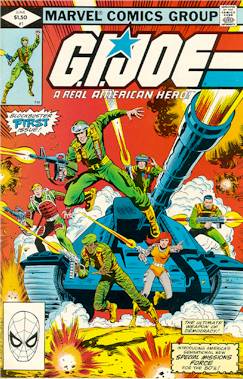
1984 also brought the acquisition of Milton Bradley, a company known for its board games including The Game of Life, Candy Land and Chutes and Ladders. Milton Bradley’s Playskool subsidiary was also a great for Hasbro. Once Hasbro acquired Playskool as part of the bargain, Playskool then bought the rights to Mr. Potato Head to position Playskool as Hasbro’s toy company aimed at the very young. This same year, Alan Hassenfeld, brother to Stephen became President, while Stephen became Chairman and maintained his CEO status.
Stephen passed away in 1989 due to complications from AIDS. Alan took up the mantle of what had become the world’s largest toy company. One of Alan’s first big accomplishments was the acquisition of Tonka Toys. One of Tonka’s subsidiaries happened to be Parker Brothers, the makers of Monopoly, which would be folded into Hasbro’s Milton Bradley division. Another Tonka subsidiary was Kenner Products, the makers of Star Wars and Batman licensed toys. In 2000, Hasbro closed down Kenner’s major toy manufacturing plant in Cincinatti, leaving an employment and economic vacuum, the effects of which are still being felt today. Hasbro moved the remaining manufacturing of their toys overseas.
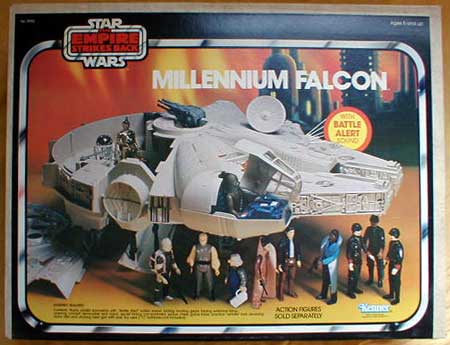
The year 2000 saw a new initiative to reinvigorate the company by reducing costs, leveraging its core brands and reducing reliance on licensed products. Some of the results of this push culminated in the release of major motion features for both its Transformers and GI Joe franchises late in the decade. Further, in late 2010, Hasbro launched a joint venture with Discovery Communications in order to launch its own television network largely featuring new and old programming based on its own properties including My Little Pony, GI Joe, Transformers and more. The network would be called ‘The Hub’.

In 2007, when Mattel was recalling millions of toys due to lead paint and dangerous magnets, Hasbro released an ad claiming that it did not use any lead paint in its products and that Hasbro was a brand that consumers could trust. The statement would have to be retracted in 2008, though, due to the recall of the Cranium Cadoo for having lead paint on its dice. This occurred shortly after Hasbro’s acquisition of Cranium. Because of the timing, Hasbro was largely not to blame for that incident though and was a problem inherited by the acquisition.
It is very easy to forget the hard work and difficult decisions that lead to the development of a toy, but the origins of some of their companies are just as interesting as the toys they made. Thats why today H is for Hasbro.


 PS3
PS3
 Famicom Dojo
Famicom Dojo KEEP PLAYING
KEEP PLAYING KEEP PLAYING: Rewind
KEEP PLAYING: Rewind Powet Toys
Powet Toys Powetcast
Powetcast Hitchhiker's Guide POWETcast
Hitchhiker's Guide POWETcast














